The 100% rye sourdough bread composition imparts a distinct earthiness and nuttiness to the bread, while the sourdough fermentation process adds a subtle tanginess. It’s very hearty and filling.
In this blog, we’ll explore the rich tradition of crafting this classic Russian loaf. Named after the Battle of Borodino, this bread boasts a deep, robust flavor with a dark crust and dense crumb. Originally Borodinsky bread is made with coriander and molasses. Today I kept this recipe simple and sweetened this bread with honey and omitted the coriander. 
You can have it with soups, or make a sandwich with it. The cool thing is you can also have it in a sweet way like with peanut butter, honey, and bananas. With so many different options this becomes very versatile and a great staple to have in the house for a healthy snack or meal. 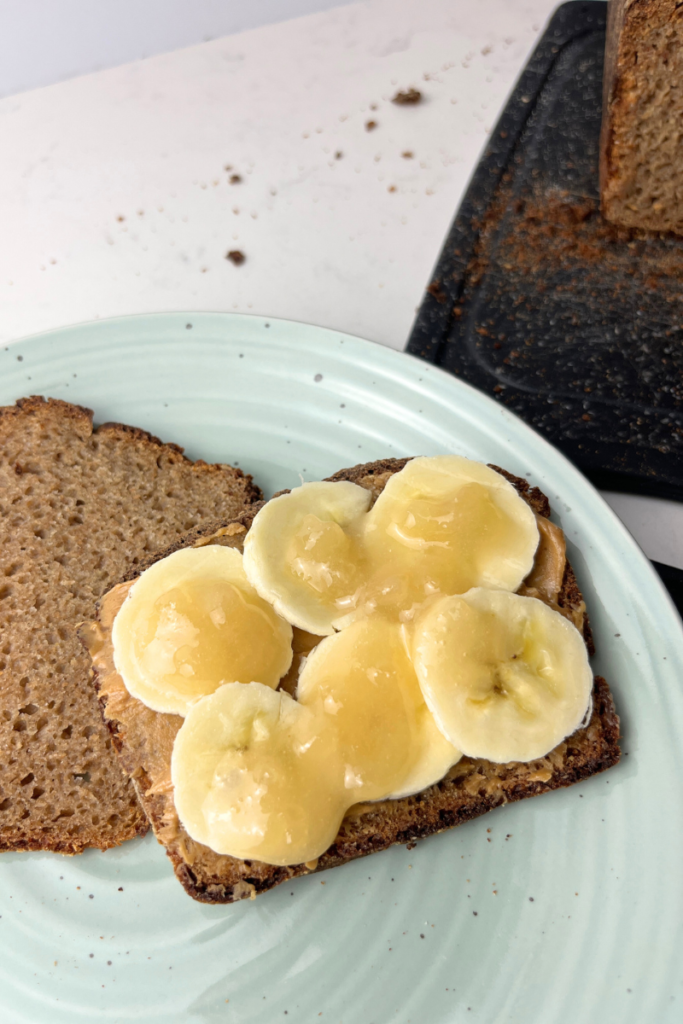
This post may contain affiliate or sponsored content.
Similar posts you might be interested in:
- Easy No Knead Sourdough Bread Recipe – Beginners Recipe
- Sourdough Jalapeño Cheddar Bread Loaf Recipe
- Sourdough Bread Bowls
- 11 Favorite Tools for Sourdough Bread Baking
Tools needed:
- Digital Food Scale
- or Measuring Cups and Measuring Spoons
- Large Mixing Bowl
- Proofing Basket
- Parchment Paper
- Razor Blade
- 5.5 qt Cast iron dutch oven
- Oven Mitts
- Cutting Board
- Sharp Knife
Ingredients:
- 520 grams rye flour (I used Bob’s Red Mill)
- 385 grams water
- 100 grams active sourdough starter (it can be white sourdough starter!)
- 12 grams salt
- 50 grams honey
Baking Instructions:
Feed the Sourdough Starter:
- Feed your starter (1 cup flour, 1/2 cup water and 50 grams of starter OR the rest of your starter you had in the fridge) and wait for it to triple (rise and start falling). Watch how I feed my sourdough starter HERE!
Mixing the Dough:
- Measure all of your ingredients water, salt, honey, sourdough starter, and rye flour.
- Mix all of the ingredients together with a wooden spoon, making a shaggy ball of dough. Make sure all of the flour is hydrated and no dry spots left.
Form the Dough:
- With slightly wet hands, massage the dough so everything is mixed together and hydrated. Form into a ball.
- Cover with plastic and leave on counter for bulk fermentation. I found that the longer fermentation with rye bread is key. 12-18 hours.
Shaping and Final Proof:
- Shape the dough and place it in a proofing basket or into a baking loaf pan right away. Allow it to undergo the final proof until it has visibly increased in size. You can also stick it in the fridge for about 4 hours.
- Dust with white flour along with rice flour.
- Dust the proofing basket with rice flour and place the dough ball into the proofing basket.

Preheat and Bake:
- Preheat your oven with a Dutch oven inside to 450°F (232°C). If you’re baking in a loaf pan just preheat your oven.
- Transfer the proofed dough onto a parchment paper, score the top, and bake for 30 minutes with the lid on and about 15 mins with the lid off or until the crust is golden.
- If you’re baking in a loaf pan, put into the oven, add some ice cubes on the side in a different pan for steam and bake for about 40-50 mins.

Baked in a bread loaf pan.
Cooling:
- Allow the bread to cool on a wire rack before slicing. This step is crucial to let the interior finish setting. If you cut in too early it will be gummy and sticky.

If you tried this recipe and love it, please come back and give it a review or a comment. Tag me on IG @shakanranch

100% Rye Sourdough Bread (Borodinsky)
Ingredients
- 520 grams rye flour preferably whole rye, such as Bob’s Red Mill
- 385 grams water filtered
- 100 grams active sourdough starter white or rye
- 12 grams fine sea salt
- 50 grams honey or molasses for a darker flavor
Instructions
Feed the Sourdough Starter (if not already active):
- Feed your starter with 1 cup rye or white flour and ½ cup water.
- Use about 50 grams of existing starter to inoculate.
- Let it rise until doubled or tripled in size and just beginning to fall. This usually takes 4–8 hours, depending on temperature.
Mix the Dough:
- In a large bowl, combine 520g rye flour, 385g water, 100g active starter, 12g salt, and 50g honey.
- Mix well with a spoon or wet hands until no dry bits remain. The dough will be thick and sticky.
Bulk Fermentation:
- Cover the bowl with plastic wrap or a damp towel.
- Let ferment at room temperature (ideally 70–75°F / 21–24°C) for 12–18 hours.
- The dough should rise by about 30–50% and appear bubbly on the surface.
Shape the Dough:
- Wet your hands and gently form the dough into a ball or log.
- Place into a floured proofing basket (seam-side up) or directly into a greased loaf pan.
- Dust the top with a blend of all-purpose and rice flour.
Final Proofing:
- Let the dough rest until visibly puffed—this could take 1–2 hours.
- Optional: For added flavor and structure, refrigerate for 3–4 hours or overnight.
Preheat the Oven:
- Preheat your oven to 450°F (232°C).
- If using a Dutch oven, place it inside to heat for at least 30 minutes.
Bake the Bread:
- Turn the dough onto parchment paper and score the top if desired.
- Carefully place it in the hot Dutch oven (or place the loaf pan directly on the rack).
- Bake 30 minutes covered, then uncover and bake another 15 minutes.
- If using a loaf pan and no Dutch oven, create steam by placing a pan of ice cubes in the oven.
Cool Completely:
- Remove the bread and cool on a wire rack for at least 3 hours before slicing.
- This bread needs time to set; slicing too early may result in a gummy texture.
Notes
• This is a naturally dense bread typical of Eastern European styles—perfect with butter, cheese, smoked fish, or soups.
• Rye bread continues to develop flavor after baking. It’s often best on the second or third day.
• Store wrapped in linen or parchment paper at room temperature for up to 5 days. Freeze for longer storage.
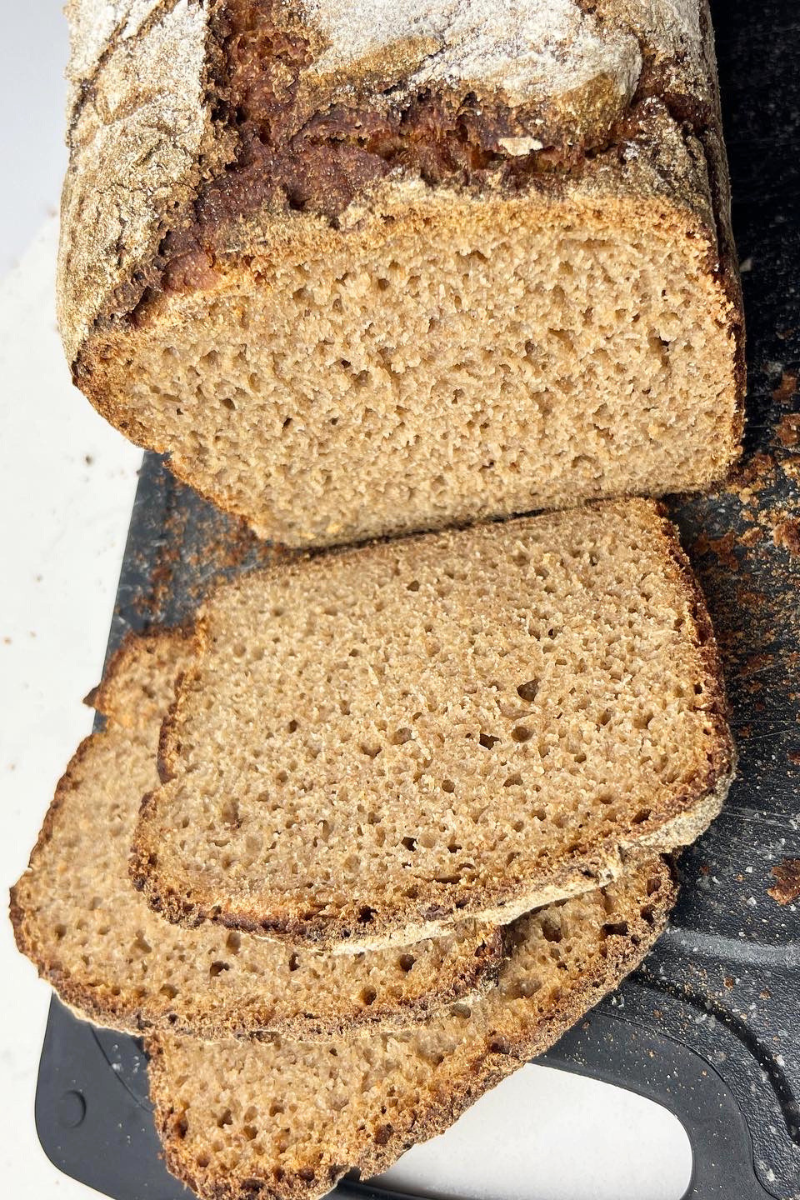
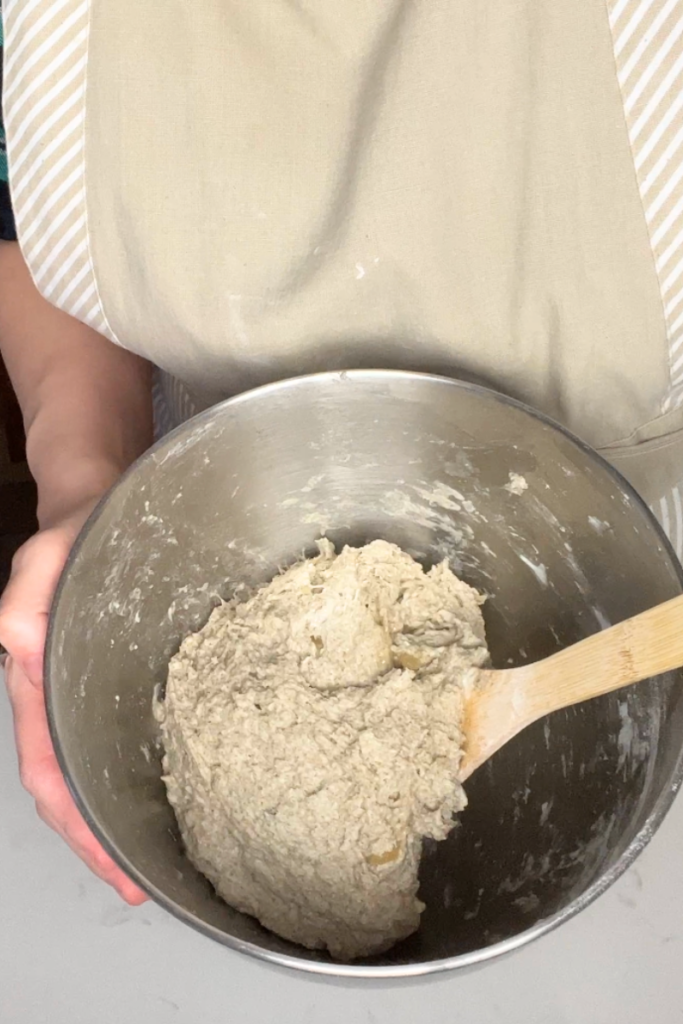
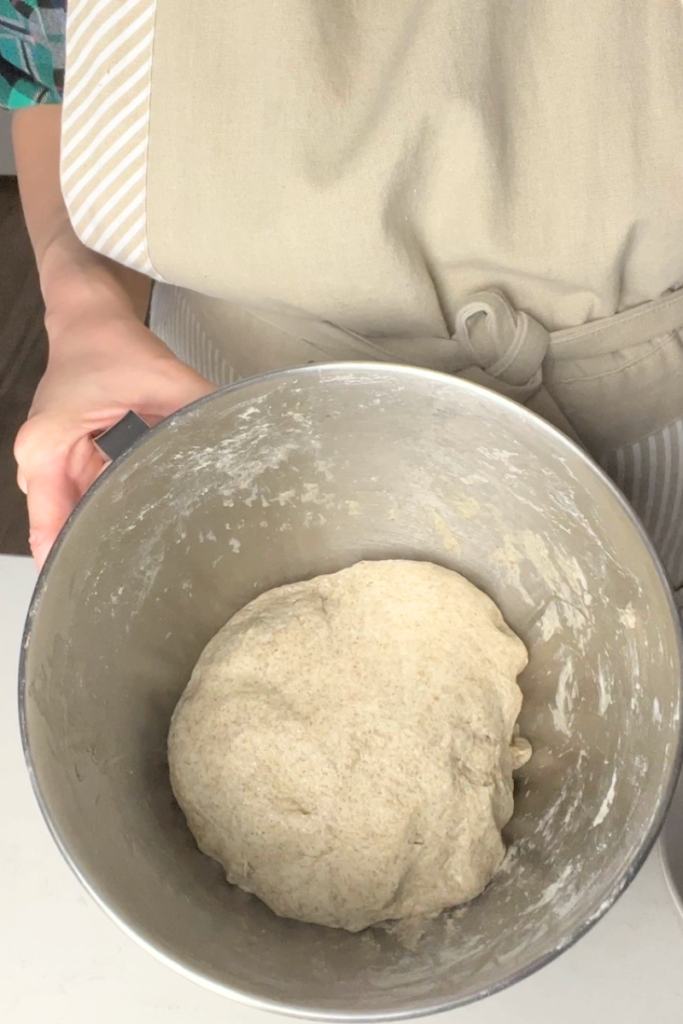
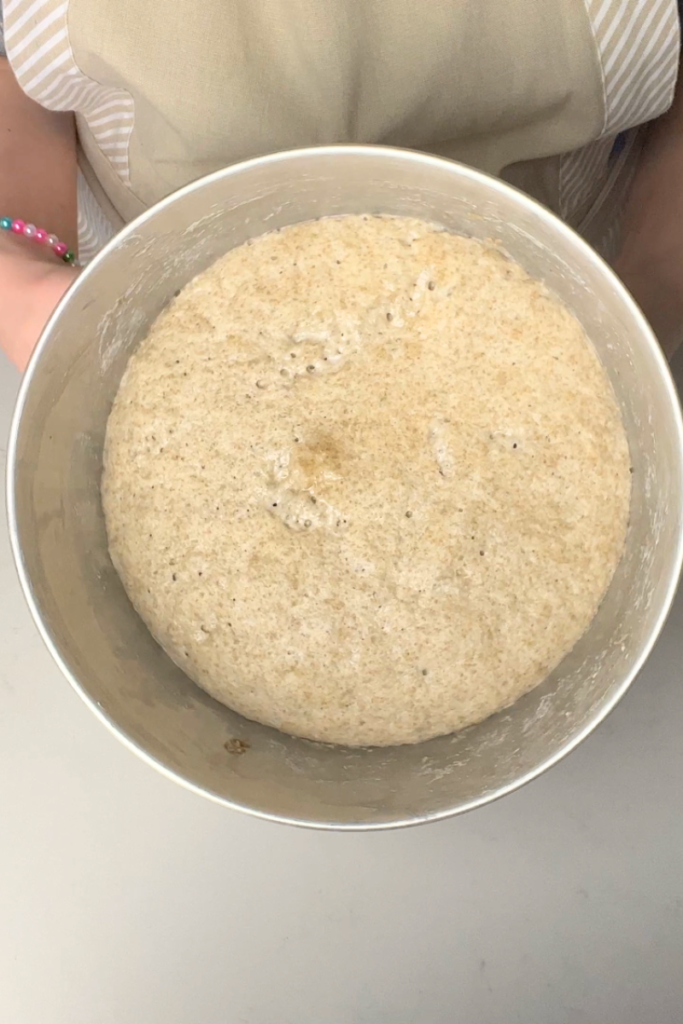
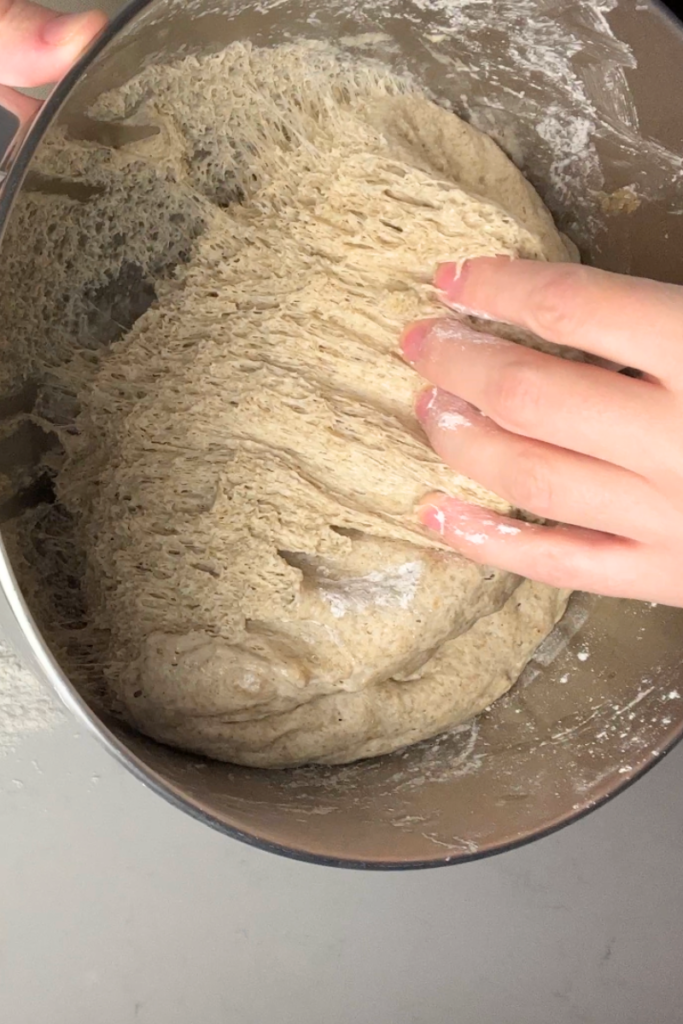

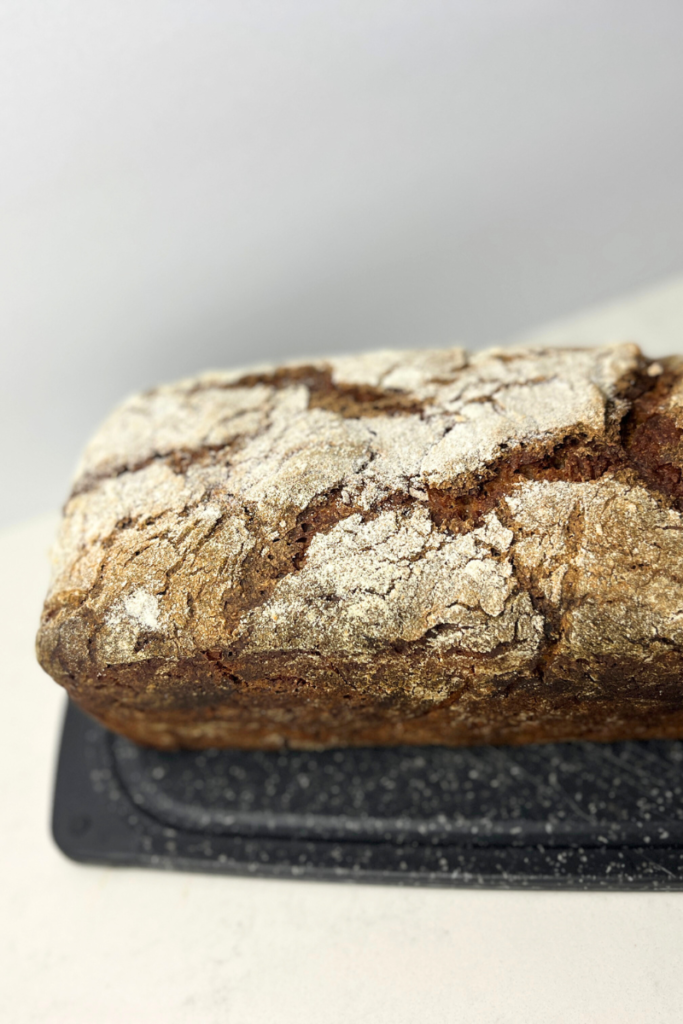

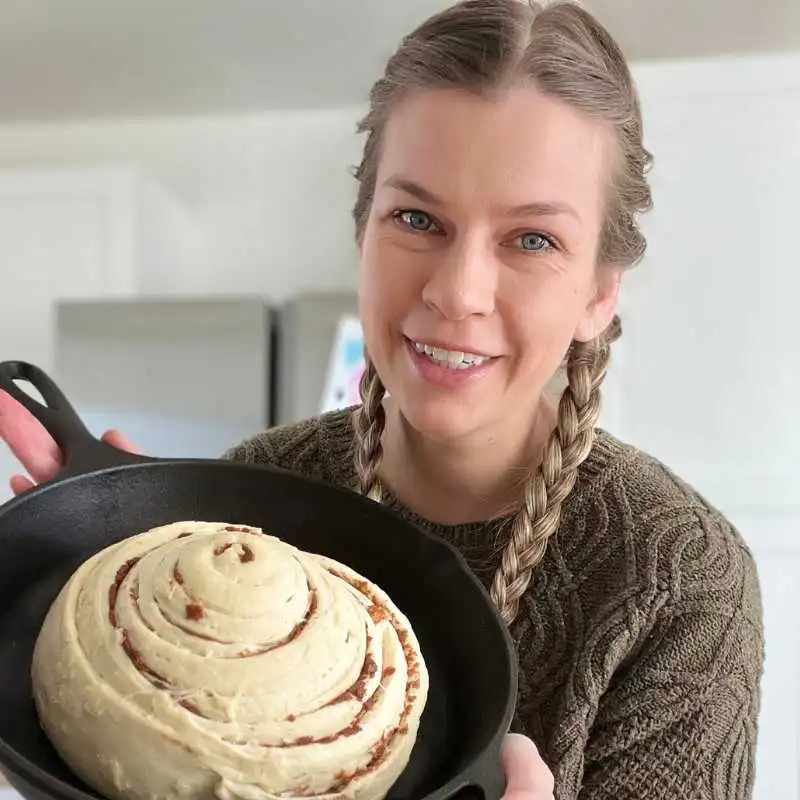
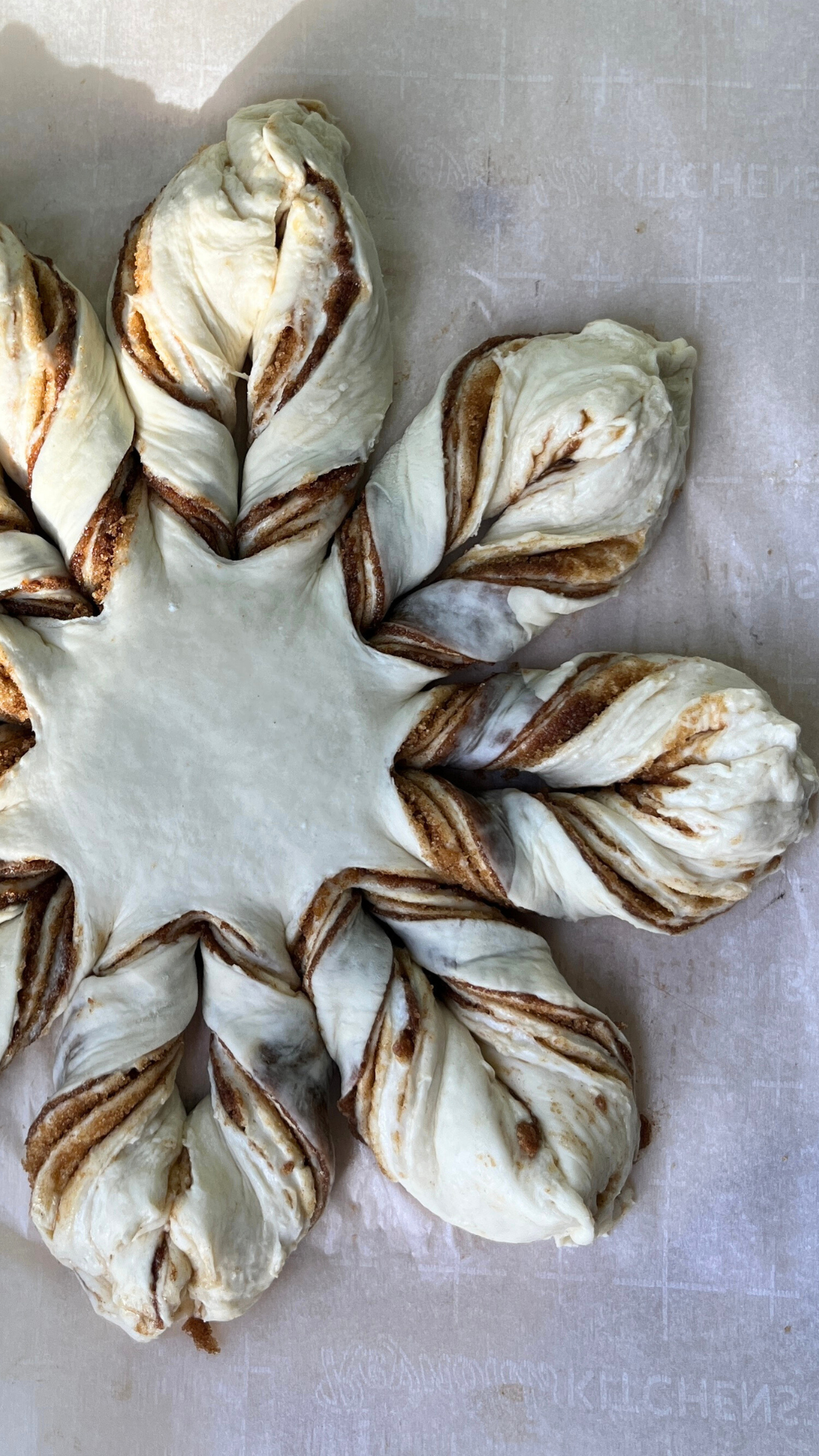


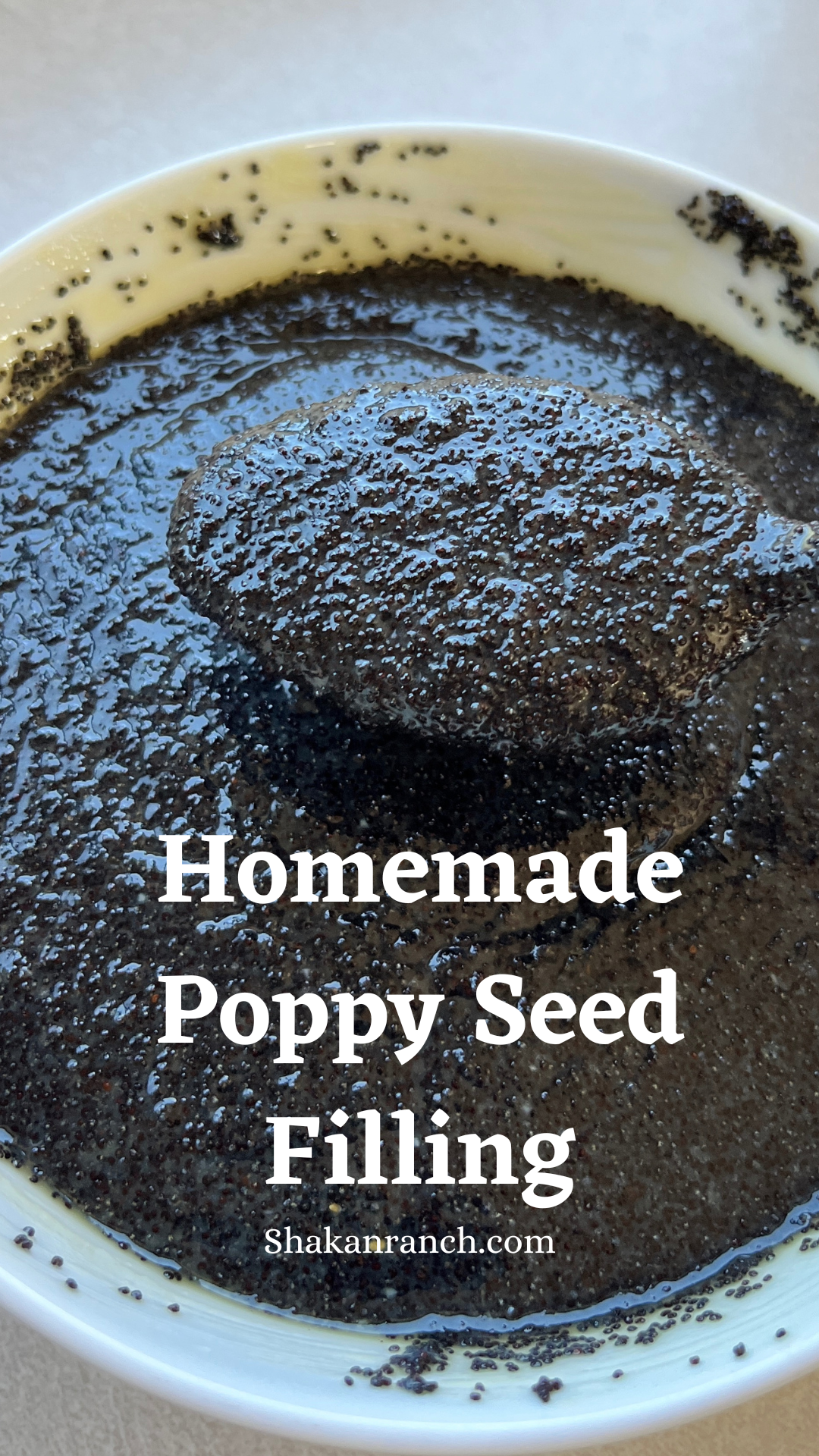

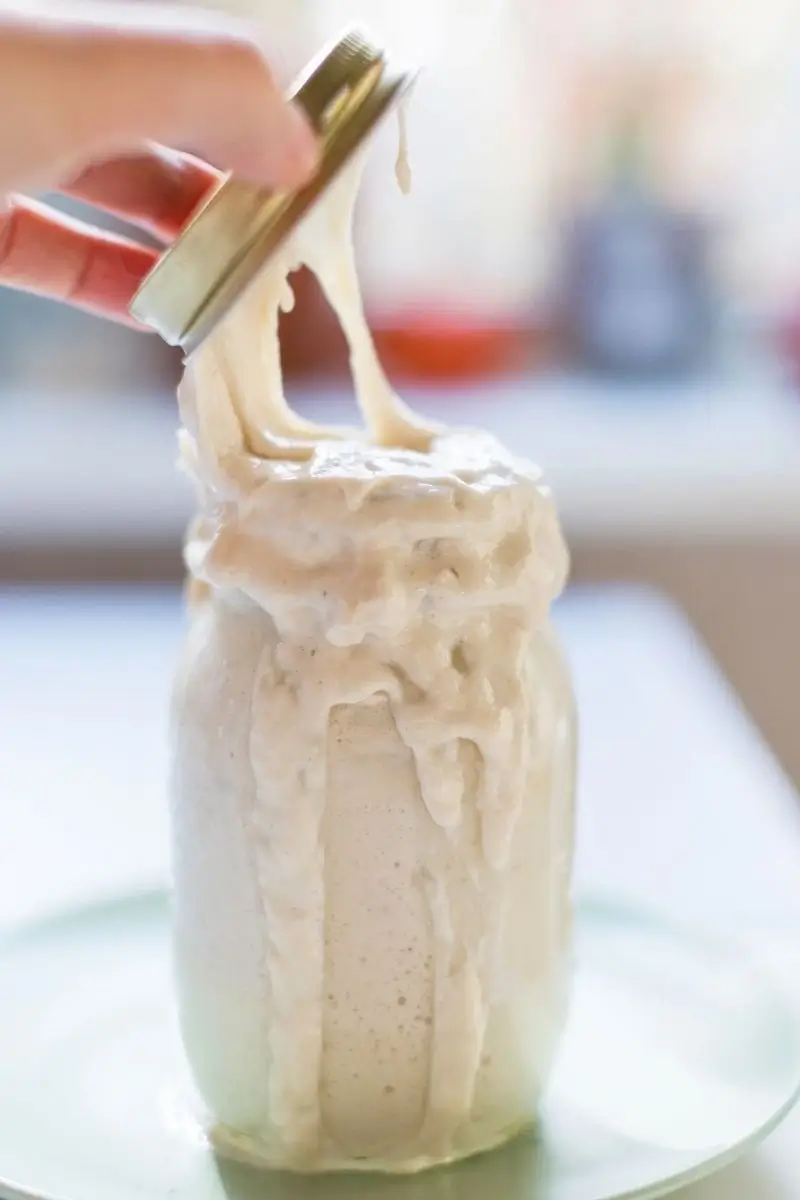

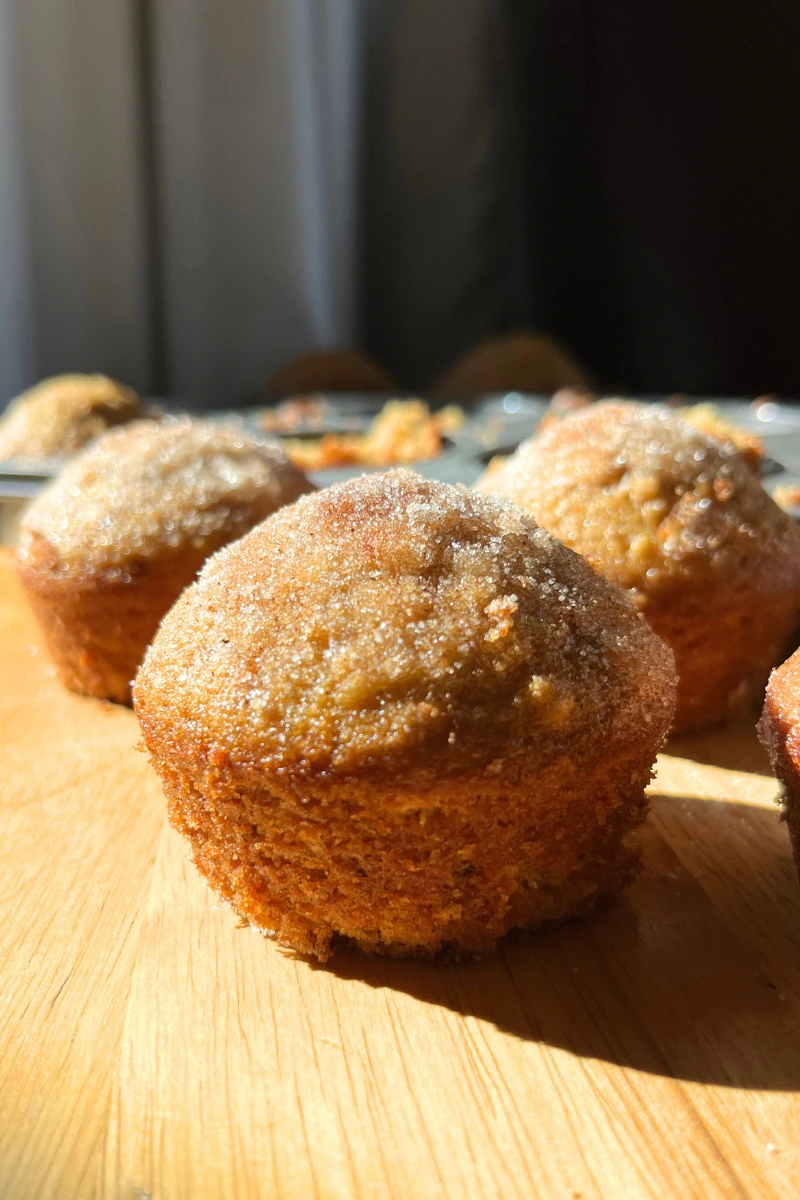

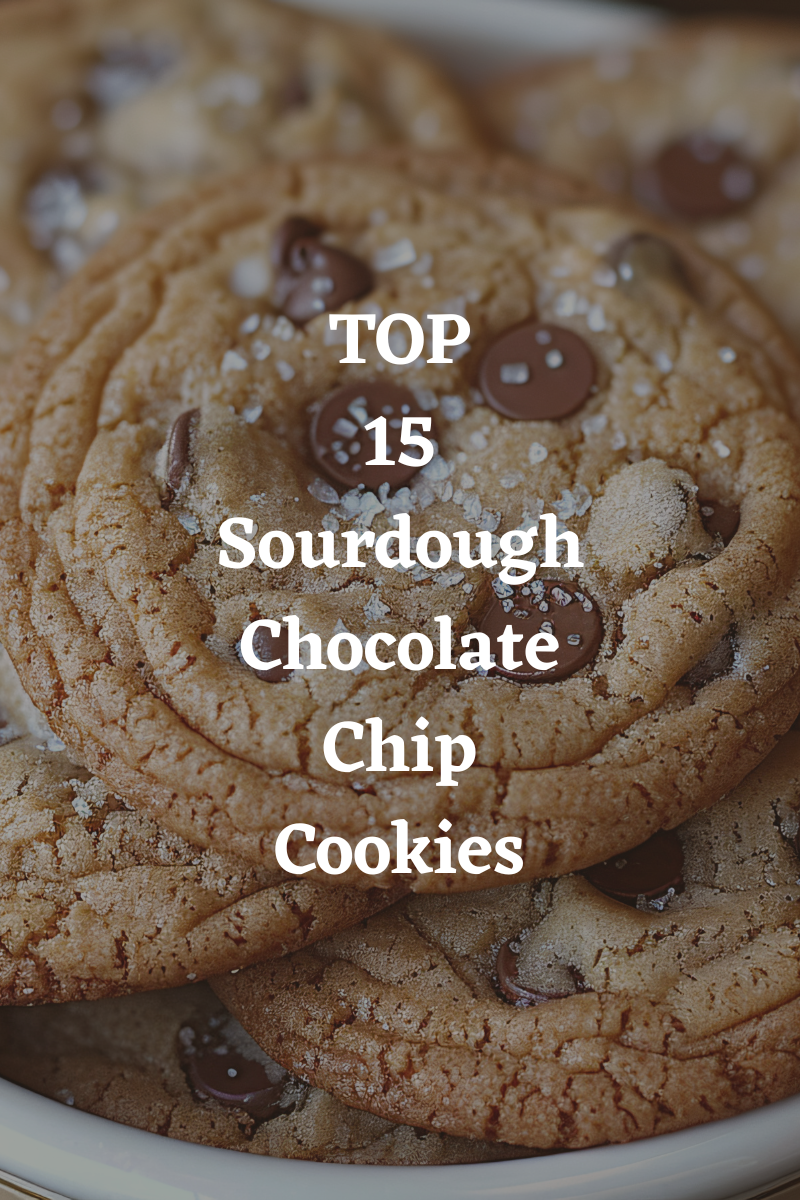

Leave a Reply